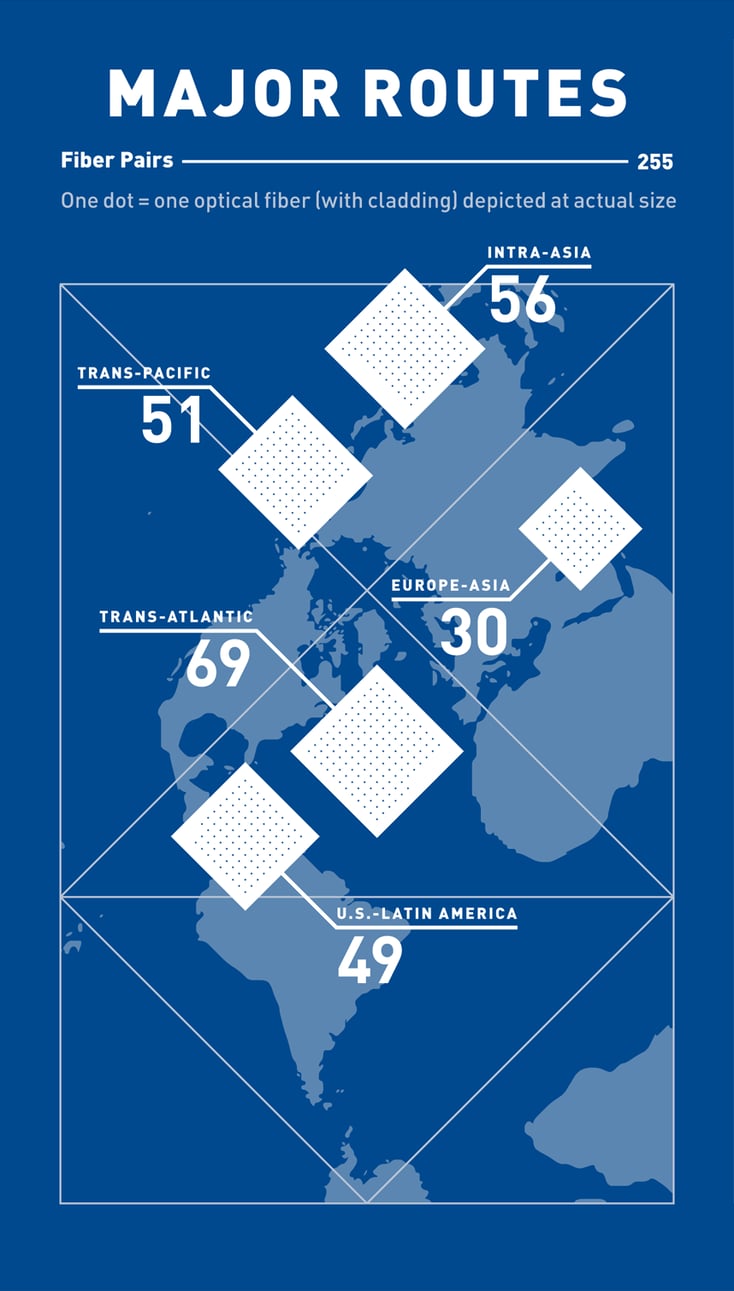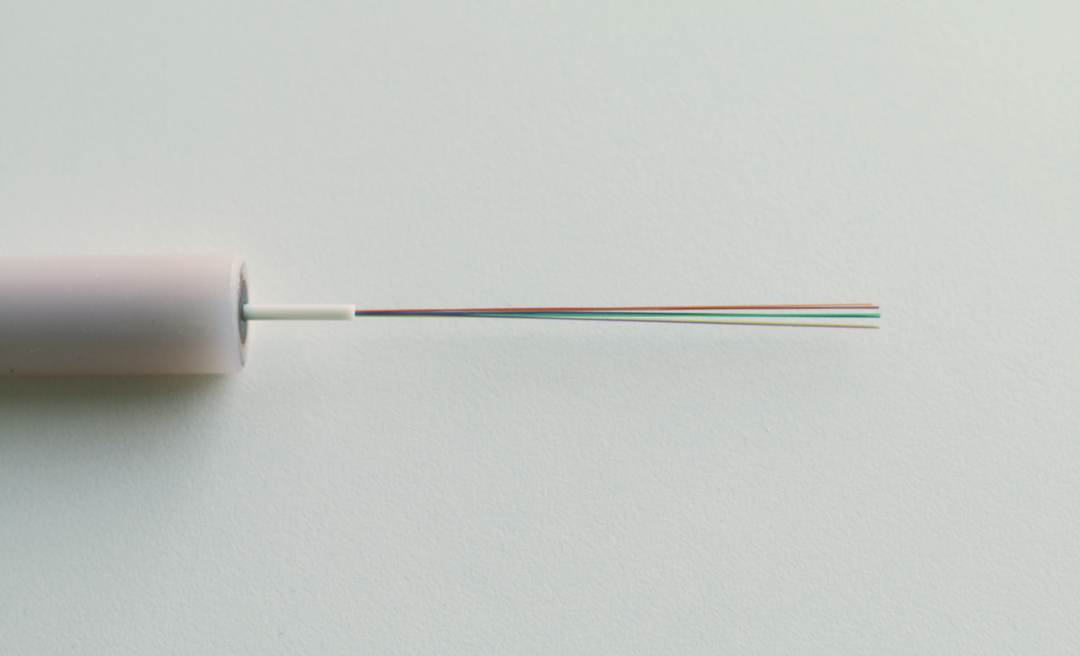As kids, many of us attached a pair of tin cans to the ends of a long string to create a primitive telephone. Somewhat ironically, modern global telecommunications still functions in a somewhat similar manner. The photo above shows an actual fiber optic cable. This is the same type of cable used in the submarine cable systems that power the global Internet. It is these thin optical fibers, not satellites, that carry the vast majority of intercontinental telecommunications traffic.
A single, modern subsea fiber-optic fiber is capable of carrying more than 10 Tbps of capacity. Amazingly, there is just a hand full of fiber pairs linking most continents. For example, only 51 pairs of fiber link North America to Asia as shown in the figure below from our latest 2016 Submarine Cable Map.
Get your copy here and enter the code "CARTOGRAPHY" for free shipping.

Alan Mauldin
Alan Mauldin is a Research Director at TeleGeography. He manages the company’s infrastructure research group, focusing primarily on submarine cables, terrestrial networks, international Internet infrastructure, and bandwidth demand modeling. He also advises clients with due diligence analysis, feasibility studies, and business plan development for projects around the world. Alan speaks frequently about the global network industry at a wide range of conferences, including PTC, Submarine Networks World, and SubOptic.

